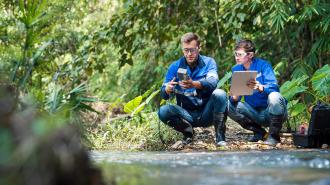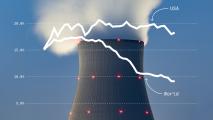This article is an installment of Future Explored, a weekly guide to world-changing technology. You can get stories like this one straight to your inbox every Saturday morning by subscribing above.
It’s 2029. You’re still a few months away from graduating from college, but job offers are already rolling in. That’s because you majored in renewable energy engineering—making you a valuable commodity in the increasingly eco-conscious labor market.
Green jobs
In 2024, the number of Gen Zers in the workforce surpassed the number of Baby Boomers for the first time, and for this younger generation, finding purpose-driven work at a company that values environmental sustainability is a top priority.
Lucky for them, jobs that fit that description are among the fastest growing in the world.
For this week’s Future Explored, we’re taking a look back at the revolution that triggered our current climate crisis, the generation with a strong will to fix it, and the labor market “macrotrends” that could help them do it.
Where we’ve been
Humans have been polluting the environment to some extent for as long as we’ve been around—even a small campfire releases carbon into the atmosphere—but the Industrial Revolution took it to a whole new level.
As the number of factories in cities increased, the air quality in them plummeted, and local waterways became polluted by a combination of industrial waste and sewage from all the people who’d left their farms to move into the cities for work.
Groups like the Coal Smoke Abatement Society formed to protest these conditions, and before the end of the 1800s, a handful of environmental protection laws would be passed in Europe and the Americas. These laws did little to slow the steady stream of pollution we were pumping into the world, though, and the advent of the automobile only worsened the problem.
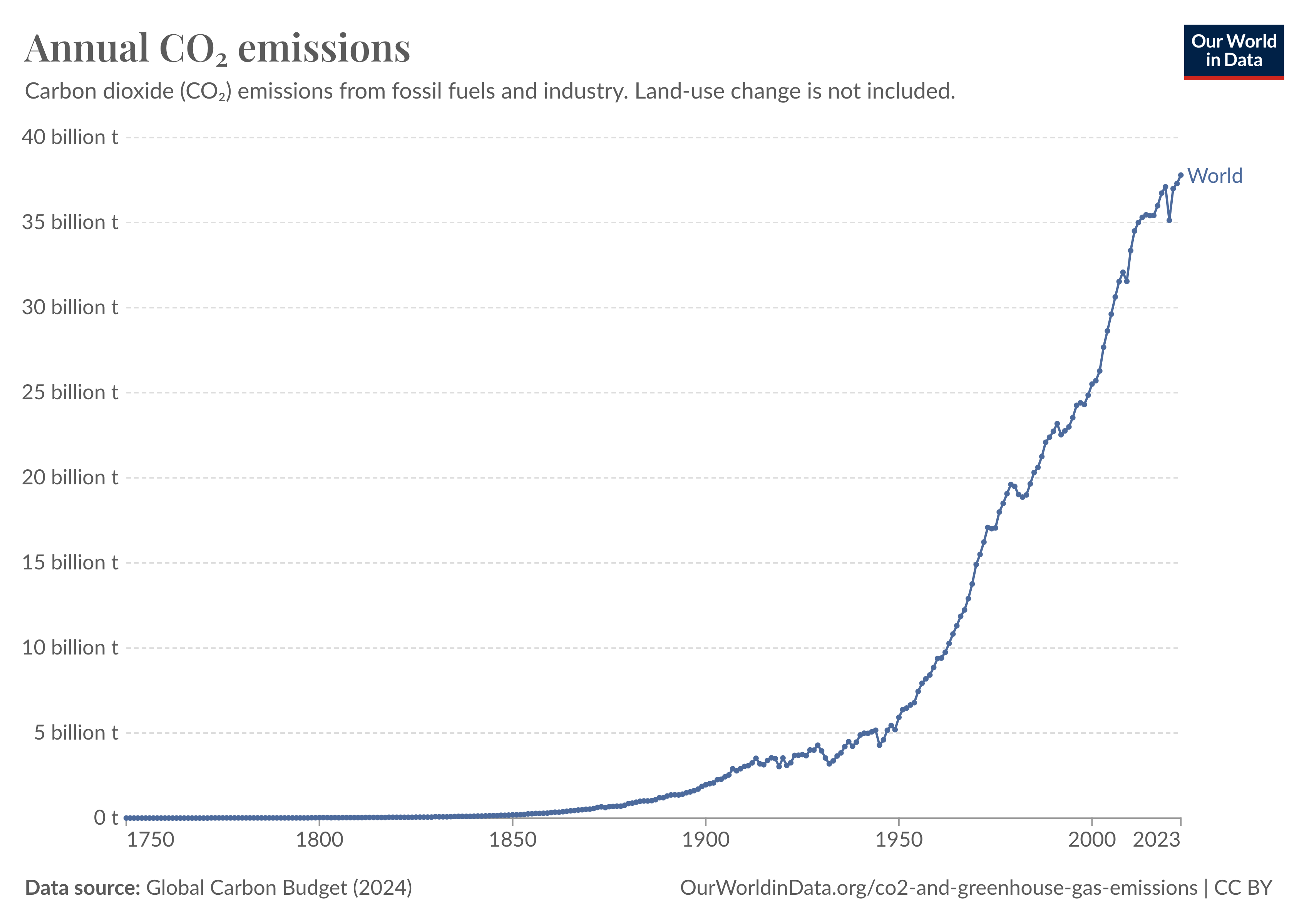
In 1938, Guy Callendar, an English steam engineer and amateur scientist, discovered that global temperatures had increased by about 0.3 degrees Celsius over the previous 50 years—a development he attributed to all the carbon humans had been pumping into the atmosphere.
Initially, his theory was dismissed by the scientific community, which was skeptical that human activity could impact something as major as an entire planet’s temperature, but by the 1970s, others began seeing what Callendar saw.
Today, there’s near-unanimous consensus among climate scientists that human-caused global warming is happening and that if we don’t significantly reduce our carbon emissions, we can expect a slew of negative repercussions, including an increase in heat waves, droughts, and extreme weather events.
Where we’re going (maybe)
Climate change has loomed over the lives of many members of Gen Z since birth—they learned about it in school, grew up seeing reports of global warming on the news, and had 24/7 access to the latest data on it since they were old enough to hold a smartphone.
This has left them with high levels of “eco-anxiety,” and now that they’re reaching adulthood, many are coping with those feelings of distress by pursuing careers that tackle the problem of climate change head on—in 2024, 61% of Gen Zers surveyed by LinkedIn said they hoped to have a “green job” within the next five years.
“Gen Z are hungry to work on this,” Efrem Bycer, who leads global climate policy partnerships for LinkedIn, told Fast Company. “They care a lot. They’re anxious about it, and they want to figure out how to translate that anxiety into action.”
At the same time, green jobs are becoming more common as nations work to meet global climate objectives and companies strive to achieve their sustainability goals.
The World Economic Forum’s (WEF) recently published Future of Jobs Report found that two of the top 10 “macrotrends” expected to shape the next five years of work are increased efforts by companies to combat climate change and to reduce carbon emissions.
The report also identified 15 jobs expected to experience the fastest growth over the next five years, and three of them could be particularly attractive options for any young people still searching for a way to help build a more sustainable future.
Electric vehicle specialists
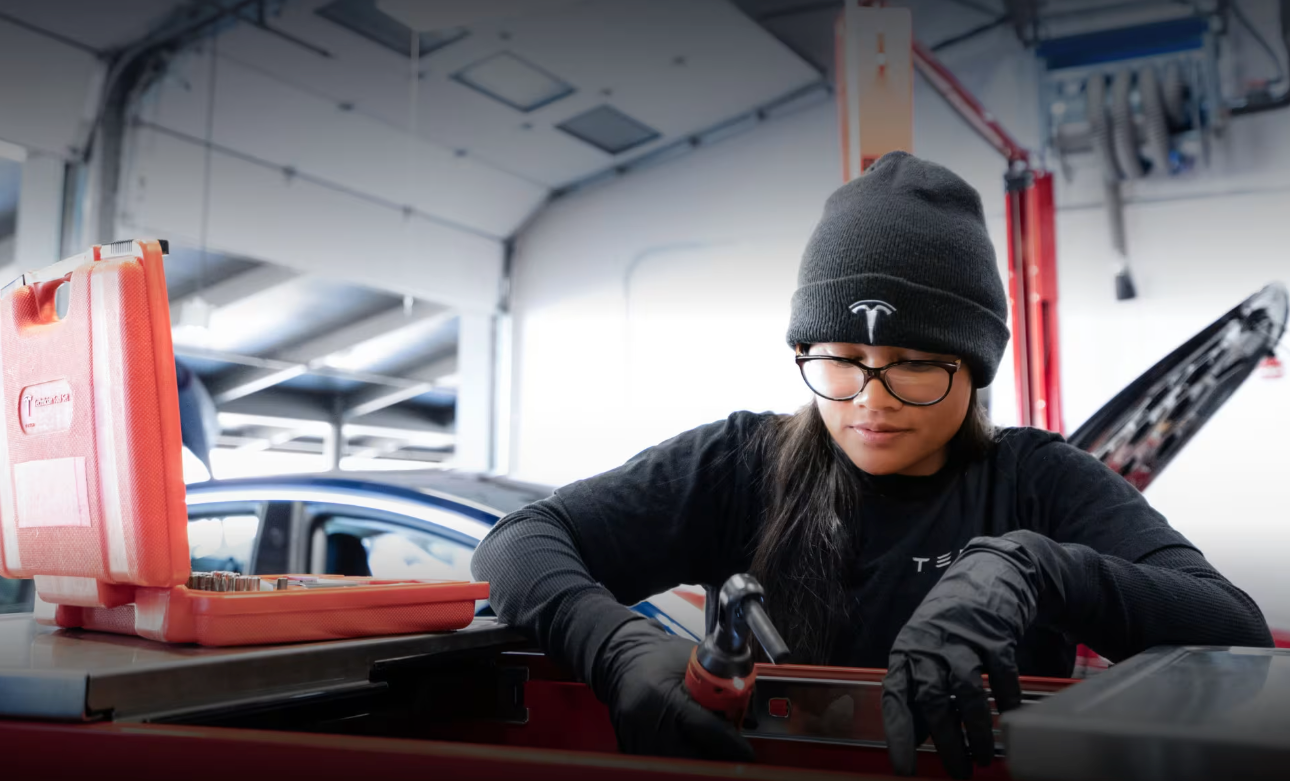
What they do: Electric vehicle specialists maintain, diagnose, and service electric vehicles (EVs).
Why it’s important: Transportation is the second largest contributor to global greenhouse gas emissions. Transitioning from fossil fuel-powered vehicles to EVs is going to be necessary to meet our climate goals, and we’re going to need people who know how to care for the vehicles.
How to become one: The requirements to become an EV specialist vary by location—some states require mechanics to have official certifications, while others don’t, so it’s possible you could find someone willing to give you an apprenticeship where you learn on the job.
A more straightforward path to becoming an EV specialist would be to complete some formal training. This can range from a one-week “bootcamp” in EV fundamentals to a two-year associate’s degree at a community college, and more training options are regularly emerging.
In 2018, for example, Tesla announced plans to partner with colleges across the U.S. for Tesla START, a 16-week program that teaches students the skills needed to become a technician at one of its service centers. More recently, the Community College of Allegheny County in Pennsylvania announced a one-year, tuition-free apprenticeship program that, in addition to classroom instruction, pairs students with local EV dealerships for paid on-the-job training.
“This is a first-in-the-nation program that we hope will be an example for the rest of the country as we continue to expand industries to ensure that we are not just building things, but we’re also protecting our clean air and our clean climate,” said Julie Su, then-acting U.S. secretary of labor.
Environmental engineers
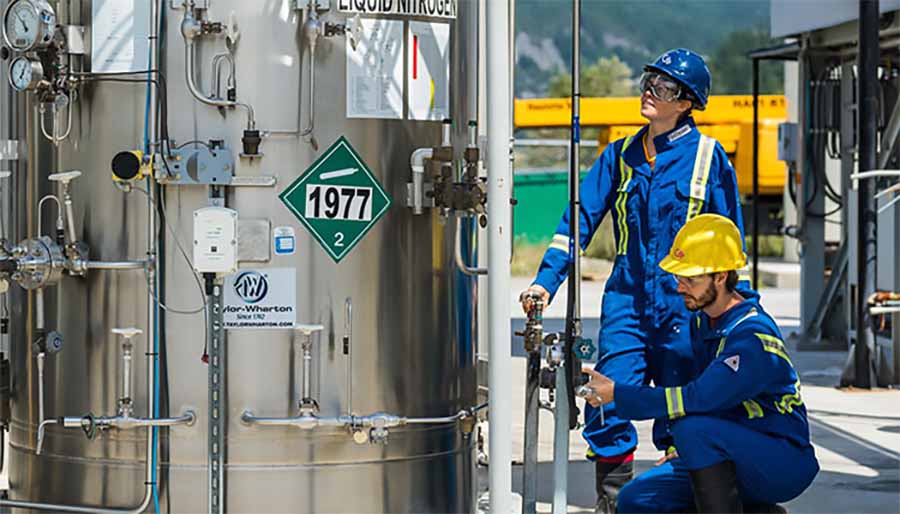
What they do: Environmental engineers use science and math to design solutions to environmental problems, such as air pollution or water contamination.
Why it’s important: We already know what we need to do to stop global warming—dramatically reduce our greenhouse gas emissions—but we need more environmental engineers to help us figure out how to achieve this as quickly and economically as possible.
How to become one: You’re going to need a degree to get a job as an environmental engineer, and for many positions, a bachelor’s won’t cut it—you’ll need to dedicate the time to earning your master’s or even a doctoral degree.
Within an environmental engineering program, you’ll typically have an opportunity to choose a specialty.
Choosing to focus on air pollution control, for example, would help prepare you for a career developing carbon capture systems, which filter greenhouse gasses out of factories’ waste streams or pull them directly from the air and then store or repurpose them.
Specializing in water resources management, meanwhile, would give you the foundational knowledge needed to build systems that can help the world overcome water scarcity, which is a problem expected to get worse in many parts of the world due to climate change.
Renewable energy engineers
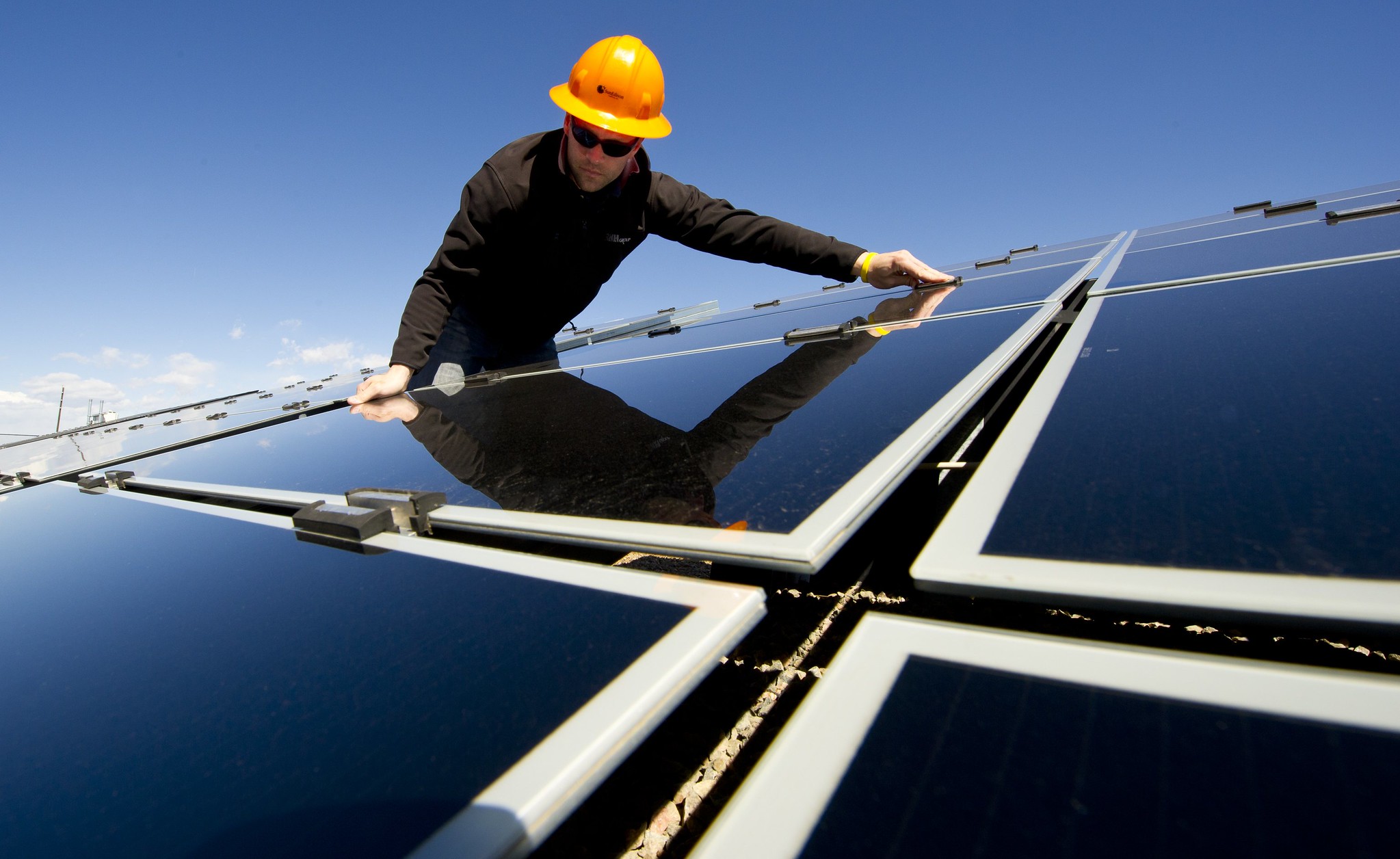
What they do: Renewable energy engineers develop and design systems that produce energy from renewable resources, such as sunlight and wind.
Why it’s important: Today, most of our electricity and heat is generated through the burning of fossil fuels. If we can replace these systems with ones powered by renewable energy, we could eliminate the world’s primary source of greenhouse gas emissions.
How to become one: You’ll need a post-secondary degree for a career as a renewable energy engineer, too, and again, you can tailor your time in school to best prepare you for the specific career you want after you graduate.
If you know you’re going to want to design wind farms, you could opt to get your degree at a university that offers a minor in wind energy, like Texas Tech or the University of Rhode Island.
If you’re interested in helping make renewables more reliable, you might want to take courses focused on building the next generations of battery systems or ones that teach you how to use artificial intelligence for better grid management.
“The path forward is pretty clear,” Assaad Razzouk, CEO of renewable energy developer Gurin Energy, told Freethink. “It’s going to be overwhelmingly solar and batteries…so naturally, solar storage, the tech around it, the AI around it, is probably the fastest growth area in terms of employment.”
“The energy industry is full of skilled talent, and that talent is transferable.”
Assaad Razzouk
A green job for everyone
These might be the fastest growing green jobs identified by the WEF, but they’re far from the only ones. Solar panel installers, wind turbine technicians, and agricultural engineers are among the many others expected to increase in demand as the world strives to meet its climate goals.
Green jobs aren’t just for Gen Z or people who’ve always known they wanted a job saving the planet, either. Workers who’ve already established themselves in industries known to contribute to the climate crisis can be particularly valuable contributors to the new green economy.
“The energy industry is full of skilled talent, and that talent is transferable,” Razzouk told Freethink. “If you’re an offshore oil and gas engineer, you’re not going to have a hard time transitioning to onshore wind or solar or even batteries.”
“No matter your skill, you are needed in the field.”
Georgia Welford-Tuitt
Even if you’ve already finished your degree or started working in a field that doesn’t seem directly transferable to work combating climate change, chances are there’s someone in the environmental movement who could use your skill set.
“You [don’t] need to have a master’s degree or to have studied environmental science to be active in this,” Georgia Welford-Tuitt, a Gen Z advisor at the Climate and Mental Health Network, told BBC StoryWorks.
“No matter your skill, you are needed in the field,” she continued. “Every movement needs an accountant, a writer, and someone who can take a powerful photograph. I think there’s a role for all of us.”
We’d love to hear from you! If you have a comment about this article or if you have a tip for a future Freethink story, please email us at [email protected].
